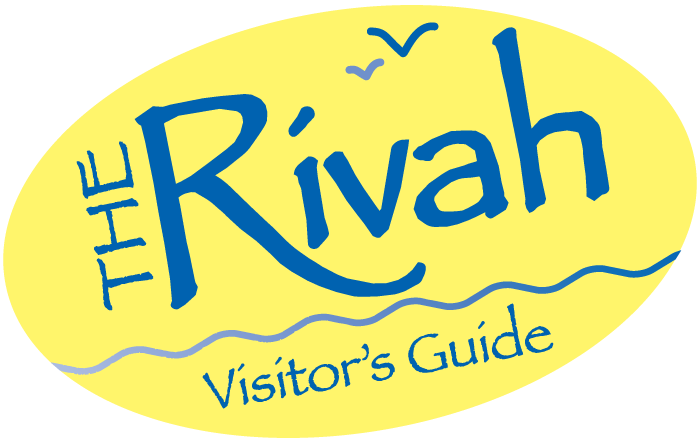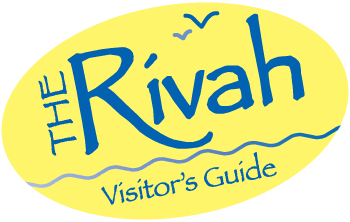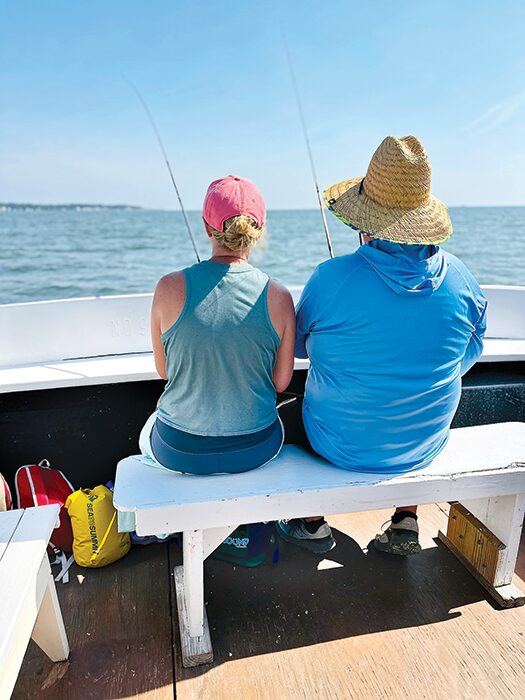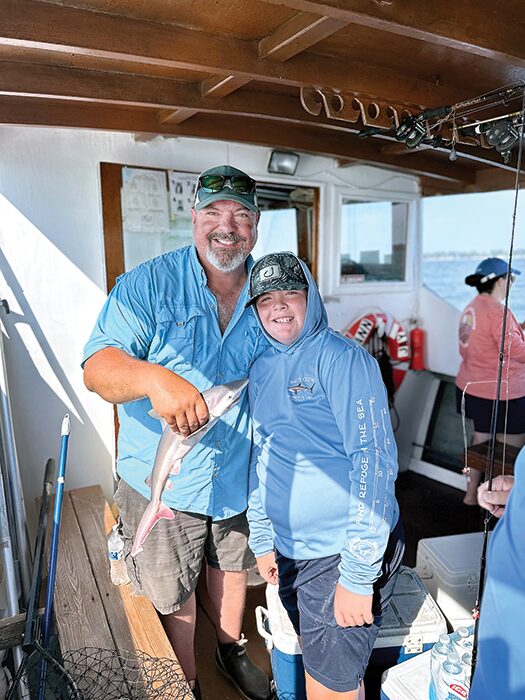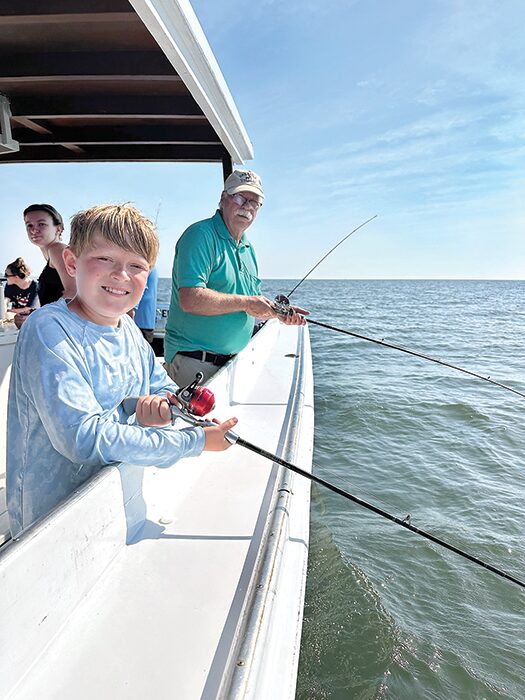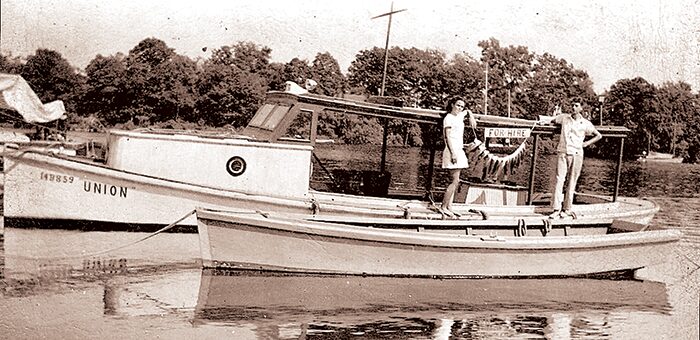
Times have changed, but charter boat outings are still quite an experience
The charter boat bottom-fishing fishery has played a longstanding role in the Northern Neck and Middle Peninsula economy and today it is still providing a workplace for some — even though times and the business have changed.
There are a couple good reasons people hire a charter boat to go fishing. Some people go out to just catch fish, while others go for the experience and the joy of fishing with family and friends out on the bay.
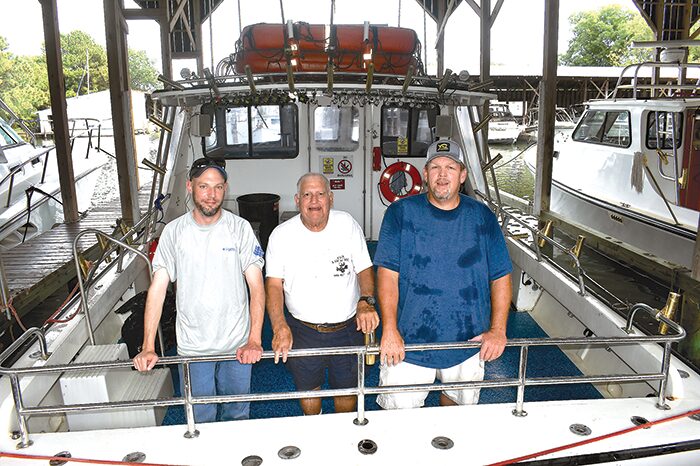
“We have two types of groups who go fishing,” said Puddin’ Glasco, 52, a charter boat captain based in Deltaville. “We have those who have been coming for years who want to catch a lot of fish,” he said. “They expect to catch fish and want enough that they can carry home to clean and salt down or freeze to last the year.
“Then, there are those who come for the experience,” he said. “They want to enjoy the complete experience of catching a few fish and spending a day with family and friends on the water.”
“We are seeing fewer groups coming just to catch fish,” he said. “One of the reasons for that is that they cannot take home as many fish as before, because of regulatory changes in catch quotas.”
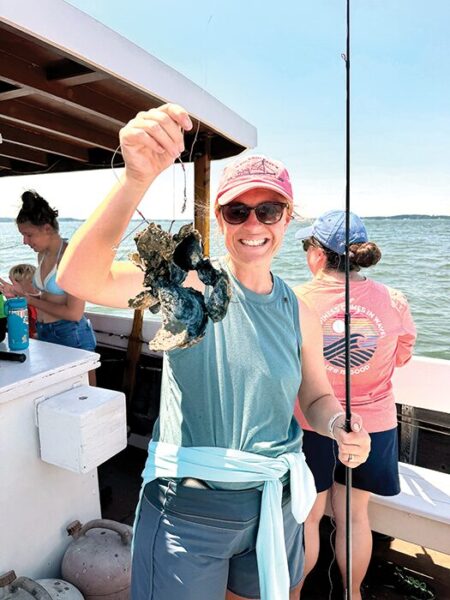
The catch limit on spot and croaker were recently changed to 50 fish per person, per day and there is a limit of one rockfish per person per day. “Fifty spot fish sounds like a lot of fish, but believe it or not it has kept some of our customers from coming,” said longtime boatbuilder and charter boat captain Robert Green, 79, of Deltaville. The younger captains, referred to Green as the “king of the Deltaville charter boat captains.”
“We have parties that come from Washington, D.C., and elsewhere that have been coming to Deltaville to bottom fish with us for years and they are used to taking home 100 spot and croaker at a time. They come once a year and catch enough fish to eat over the entire year. When fish are biting, we can catch 50 spot per person by 9 a.m. We have had customers not come back this year because of that new law,” said Green.
Green gave up boatbuilding and went into the charter fishing business 19 years ago and he recalls when he first started he’d go over to The Cell on the lower end of the cut channel on Virginia’s Eastern Shore and catch coolers full of 15- to 18-inch croakers. “We are lucky today to see a 10-inch croaker,” he said. “It was an exciting time when those big croakers were running.”
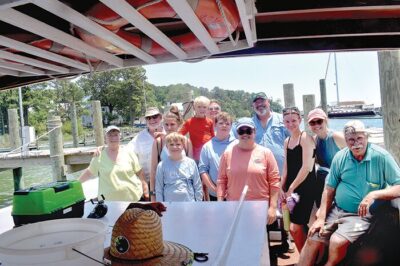
best. Photo by Tim Haley
Spud Jarvis, 37, is the youngest of the Deltaville captains. He works out of Norview Marina. He enjoys the business most when family and friends go fishing as a group. Jarvis said his most memorable experience was in the business he immediately said watching a child catch their first fish. “When I see the expression of joy and excitement on the face of a kid catching that first fish I understand why I’m in this business,” he said.
“Another exciting moment was when a fisherman caught a 54-pound, 12-ounce rockfish on the boat. “That was quite a fish and an exciting day,” he said.
Changes in the business
Glasco and Green recall the days when they provided customers with bait. “We had good bait suppliers and could get bloodworms at reasonable prices,” said Green. “Those days are over. The cost of worms have gone through the roof and the quality of worms has changed. When we supplied our own bait our customers caught more fish, but it is not cost effective now for us to supply bait.
“A lot of people use artificial fish bites now and if the fish are out there they catch as well on that as they do on bloodworms,” said Green.
The days of all-day fishing is gone too. The boats work from 7 a.m. to 1 p.m. for the most part. “We usually catch best in those times,” said Glasco. “We work the tides and the heat and from 7 a.m. to 1 p.m. usually works best,” he said.
Another change is that most of the boats in Virginia bottom fishing charter fleets are made of fiberglass rather than wood. “Coast Guard regulations have made it hard for a wooden boat to work in the business,” said Green, who as a third generation boatbuilder in Deltaville built wooden boats in the 1980s and 1990s.
Going fishing on a wooden head boat
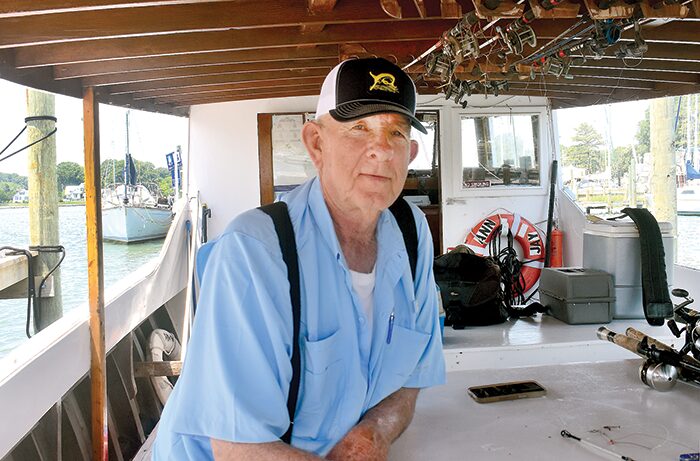
One charter boat fisherman who is still using a traditional wooden deadrise boat is Tim Haley of Hartfield. Haley had the late Alvin Sibley build the Rob Ann Jay in the 1980s and he works the boat out of Jackson Creek.
“I have customers who come to me because I have a wooden deadrise boat,” said Haley. “It used to be that all the head boats around here were made of wood. It has not been that long ago that Lockley’s Creek (on Rappahannock River) was loaded with wooden head boats. As far as I know they are all gone.”
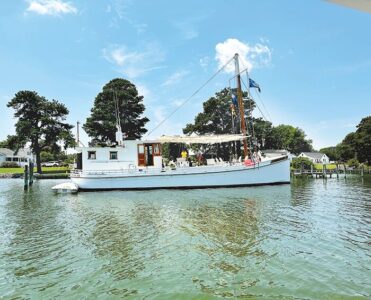
“I’ve got customers who fished in their grandfather’s deadrise wooden oyster boats in the 1950s and 1960s who just want to experience that similar experience in a wooden boat one more time,” he said.
In June, I took my family out on the Rob Ann Jay for just that reason to give the grandchildren a cultural taste of life by throwing a fishing line over a 12-inch wooden washboard; to catch the first fish of the day and see the expression of excitement from all; to hear the words ‘I got one’; to feel the excitement and disappointment in pulling in the biggest flounder of the day only for it to drop off when above the water surface; to land a small sand shark and hear the children sing all in unison the song, “Baby Shark”; for them to feel the sturdiness of that wooden boat beneath them; to see the thousands of diamonds on the water as the sun and water collide; and to smell the salty Chesapeake Bay air.
“I think everyone caught a fish that day,” said Haley. “I know I had a good time and I am pretty sure there will come a day that those grandchildren, 50 years from now will be sitting around a dining room table — maybe eating fish — talking about that shark that was caught on my boat.”
Chesapeake Bay charter boats have a long history of service
The history of charter boat fishing goes back to the era of log canoes, late 1800s and early 1900s, on Chesapeake Bay when people would come down to the “Rivah” from the city between oyster seasons and want to go fishing. With the oyster season over, oystermen rigged their boats up to go chartering.
During an interview with the late Paul Feitiz of Urbanna in 1995 he spoke of the way the fishery started and the way he and his father-in-law Joe Eastman worked in the business in the 1920s — nearly 100 years ago.
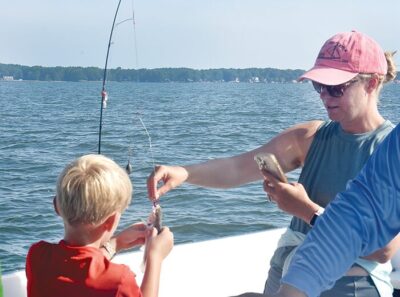
“I ran fishing parties in a log canoe with my father-in-law at Christchurch,” he said. “We would take customers out for one dollar a head and we would take out no less than five.
“They could catch fish just as long as they wanted during the day for a dollar. If they wanted lunch, we would take them out in the early morning, bring them in at lunchtime for one of Mrs. Eastman’s meals, and then take them back out for more fishing.
“Mrs. Eastman was serving meals at the house for 75 cents and she never set a table that she didn’t have fried chicken, ham, or roast beef. Seventy-five cents! A lot of people would drive from Richmond down there on Sunday just for the meal.
“We had groups of people come down from Pennsylvania and spend whole weeks. It was a whole damn house full of people — seven or eight of them. Mrs. Eastman would give them three meals a day, fishing and night lodging for $15 a week.
“One summer, Mr. Eastman and myself didn’t hardly stay a day at home. We had parties everyday the sun shined. We would go right off from the house at Christchurch on Hoghouse bar and catch all the fish they wanted.
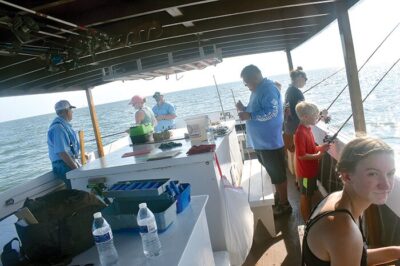
“We didn’t hardly know what a bloodworm was back then. We supplied crabs for bait. The bait went with the dollar a day for fishing. The only bloodworms we saw were some that the fishermen brought with them.
“For bait, we would buy a bushel of crabs from a Mr. Fitchett. It cost us a dollar a bushel for hard crabs and we had a float down by the shore. We would put them in the float to keep them alive. Now days, everyone wants a peeler crab for bait, but we always did all right with plain old hard crabs.
“We didn’t advertise. It was all word of mouth. Different ones would come down and then go back home and tell their friends. ‘We went down to Joe Eastman’s at Christchurch and caught plenty of fish.’ Word of mouth is the best advertising in the world.”
“I’d clean all the fish for the people who came down… and they’d give me a tip,” said Paul. “I would clean them and pack them down in crushed ice. One time I got a $20 tip. That was a day I remember!”
The modern day charter boat fishery grew out of these early beginnings and has evolved over the years. Today regulations on fishing, high cost of bait, fuel, insurance and maintenance of vessels and better roads that allow patrons to travel back and forth to home in a day have all changed the charter boat business.
Deltaville Charter Boat Captains
Captain Robert Green
Boat name — Miss Diane
Style of boat — Crusader 33’ fiberglass boat
Location — Norview Marina, Deltaville, Va.
Size of group — a six-pack – six in a group or less
Bait — Bring your own
Time fishing — 7 a.m. to 1 p.m
Phone number: 694-9902
Captain Tim Haley
Boat name — Rob Ann Jay
Style of boat —
Chesapeake Bay 47’ x 13” deadrise wooden boat built by the late Alvin Sibley of Deltaville
Location — Jackson Creek Marina, Deltaville, Va.
Size of groups — Can carry up to 20 in a group but prefers no more than 17
Bait — Bring your own
Time fishing — 7 a.m – 1 p.m.
Phone number: 815-3514
Captains Puddin’ Glasco and Captain Bailey Hall
Boat Name — Karen Lynn and Lucky Lady
Styles of boats —
Karen Lynn 38’ x 14’ built by Evans Boat Construction & Repair — Lucky Lady 55’ x 15’ wooden boat built by Robert Green
Location — Chesapeake Cove Marina, Deltaville, Va.
Size of group — Karen Lynn 12, Lucky Lady, 42
Bait — Bring your own
Time fishing — 7 a.m. to 1 p.m.
Phone number 832-3847
Captain Spud Jarvis
Boat Name — Restin Easy II
Style of boat — 42’ fiberglass built by Hulls Unlimited-East
Location — Norview Marina, Deltaville, Va.
Size of group — 14 to 20 in a group
Bait — Bring your own
Time fishing — 7 a.m. to 1 p.m
Phone number (434) 221-1463
